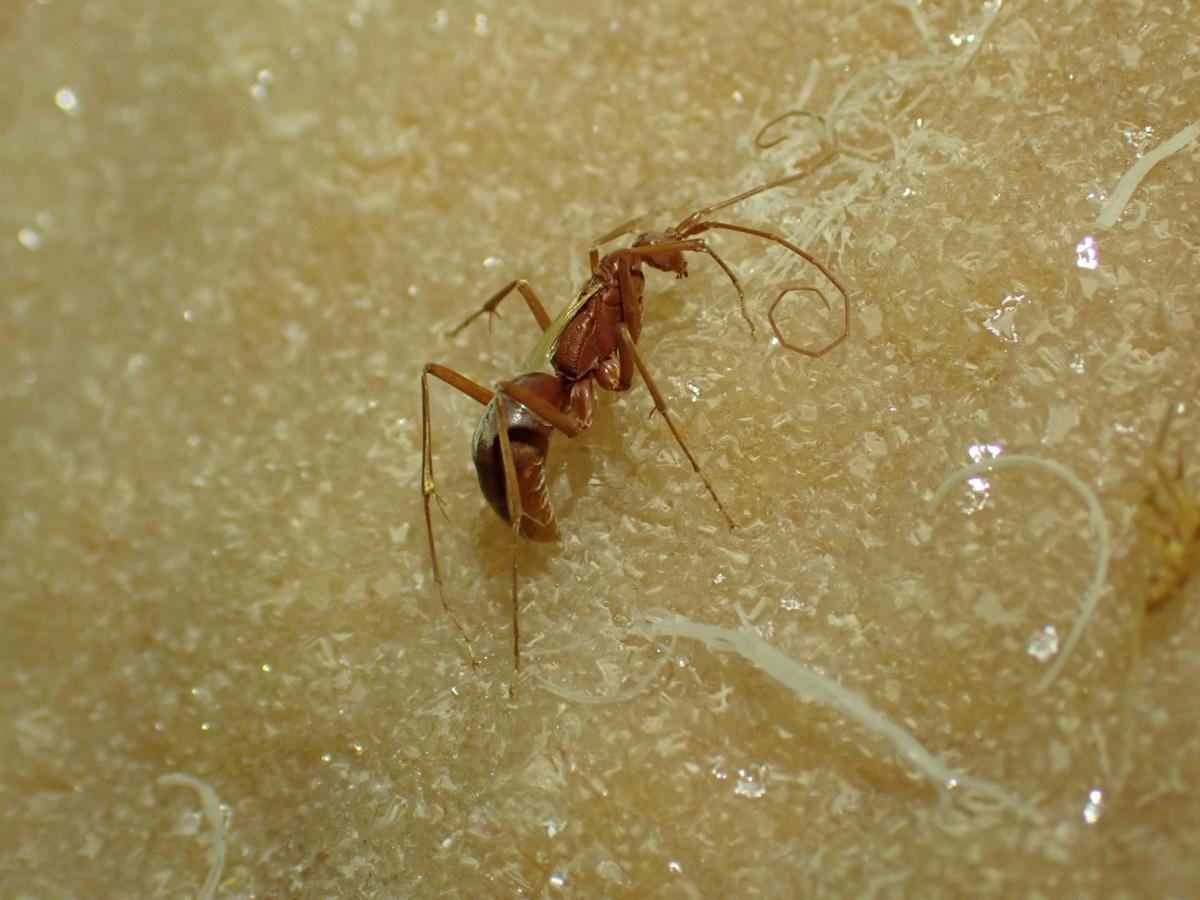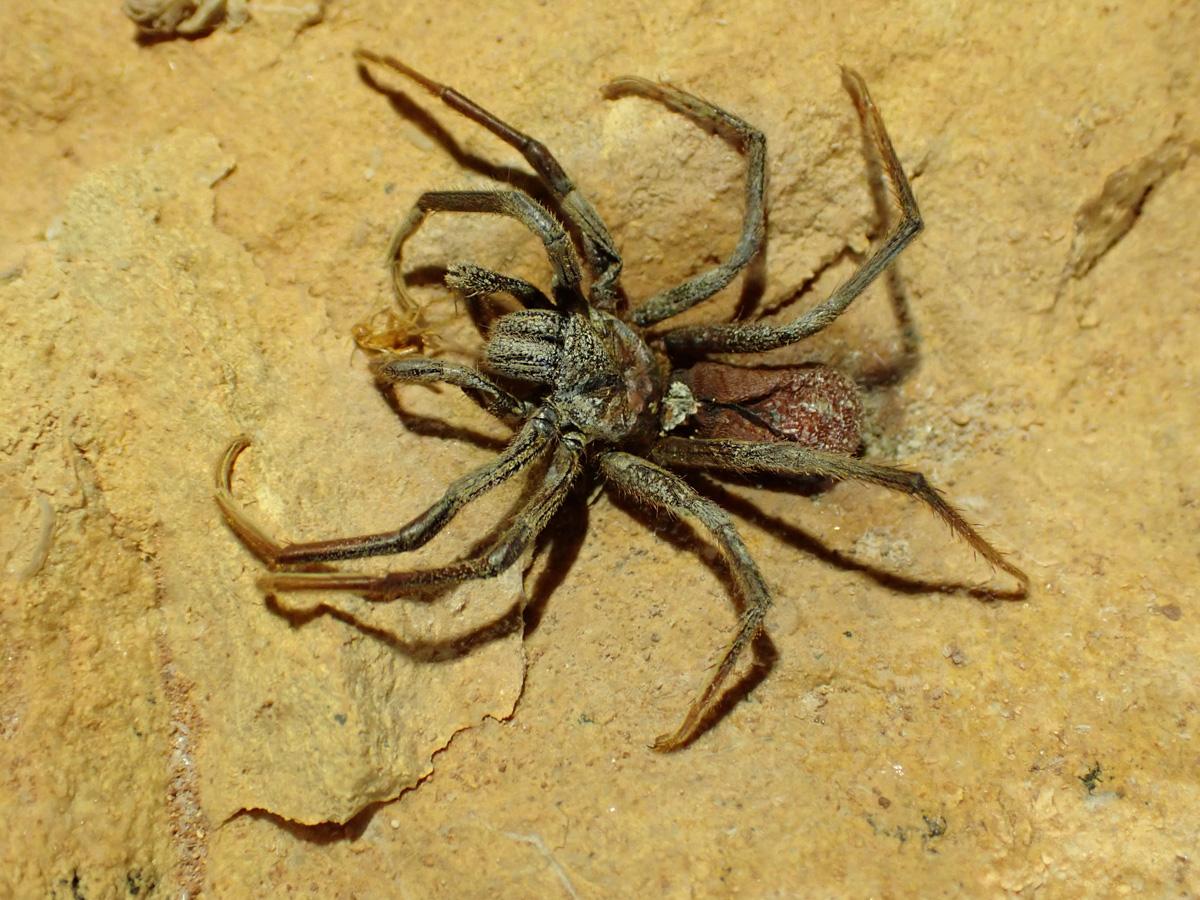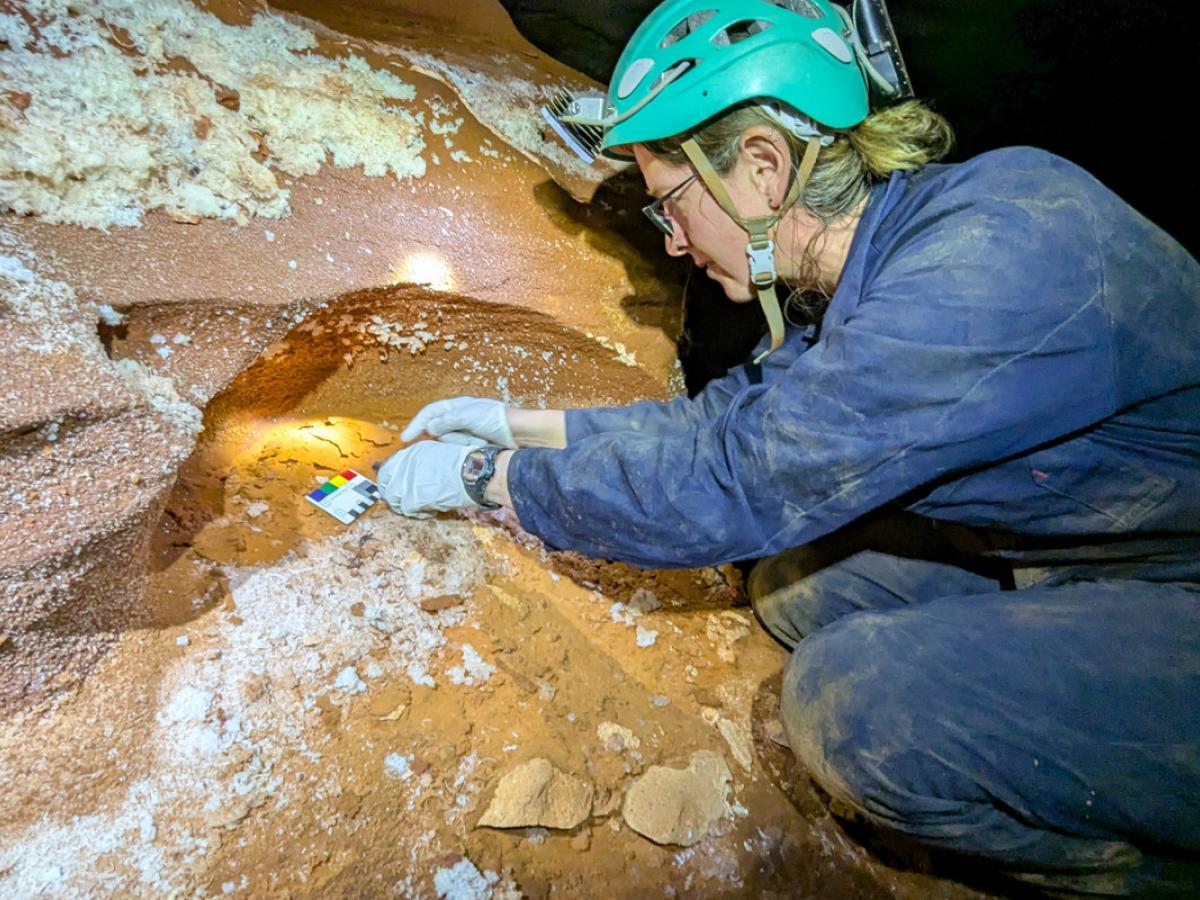A team of researchers from the University of Adelaide, in collaboration with cavers, has uncovered a large number of eyeless, cave-adapted invertebrates - including spiders, cockroaches, centipedes, and, remarkably, a wasp.

A male wasp. Credit: Jess Marsh.
The wasp is the only known example in the world to show physical adaptations for life in complete darkness. It has no functional eyes, greatly elongated legs and antennae, and extremely reduced wings - an extraordinary example of evolution in extreme environments.
"All the invertebrates found in the cave were already dead and were incredibly well-preserved, mummified in the dry cave environment," says the University of Adelaide's Dr Jess Marsh, who led the survey.
"The cave contains thousands of such invertebrates. Some, bizarrely, had died mid-way through climbing the cave walls - caught frozen in time.
"Many of the invertebrates we discovered are new species, and some might already be extinct. The age of the specimens is not currently known - they could be dozens of years old, they could be hundreds, they could be many thousands."
With funding from the Australian Research Council and the Hermon Slade Foundation, Dr Marsh and her team at the University of Adelaide are now conducting analyses to determine the age of the samples and to unravel the mystery of why only dead specimens - and no living ones - were found in this cave.

A dead female eyeless spider, from the genus Troglodiplura, with her prey. Credit: Steve Milner
Surveys of a second cave revealed a living population of a likely new species of large, eyeless, cave adapted spider. These pale, slow moving and graceful spiders build very large webs in caves, which they string between rocks.
"Each of the currently described species of these spiders are only known from single caves, and it is possible that this new species may only occur in this one cave," says Dr Marsh, who is a founder and Conservation Lead of Invertebrates Australia.
"This makes it at very high risk of extinction. Unfortunately, the survey team also found a large amount of fox scat and a dead fox in the cave. Research is ongoing to find out whether foxes predate on these spiders."
Researchers and cavers from the Australian Speleological Federation who conducted this survey travelled more than 1.5 km into the remote cave beneath the Nullarbor Plain.
"The long journeys into these caves were incredibly challenging - filled with tight squeezes, a lot of time spent crawling, and belly-wriggling through dusty sediment, plus a few nerve-wracking heights. But I would repeat it in a second," says Dr Marsh.
"There is an otherworldly beauty inside the caves. The sheer magnificence of the stalactites, stalagmites and other structures and the awe-inspiring diversity and number of invertebrates were worth every second of discomfort."

Jess Marsh surveying a cave. Credit: Steve Milner.
The biodiversity revealed in the field trip provides an important glimpse into the past and present ecosystems of the Nullarbor.
"These remarkable findings provide us with a unique glimpse into the biodiversity of the Nullarbor caves and provides further information on the importance of the area for biodiversity," says Dr Marsh, who is a member of the Biodiversity Council of Australia.
"This is important to note given the caves we surveyed in this field trip are in the proposed footprint of a large-scale green energy development.
"There are thousands of caves on the Nullarbor, many of which have not had scientific surveys, and our findings indicate that there may be many more weird, wonderful and scientifically important species out there."






